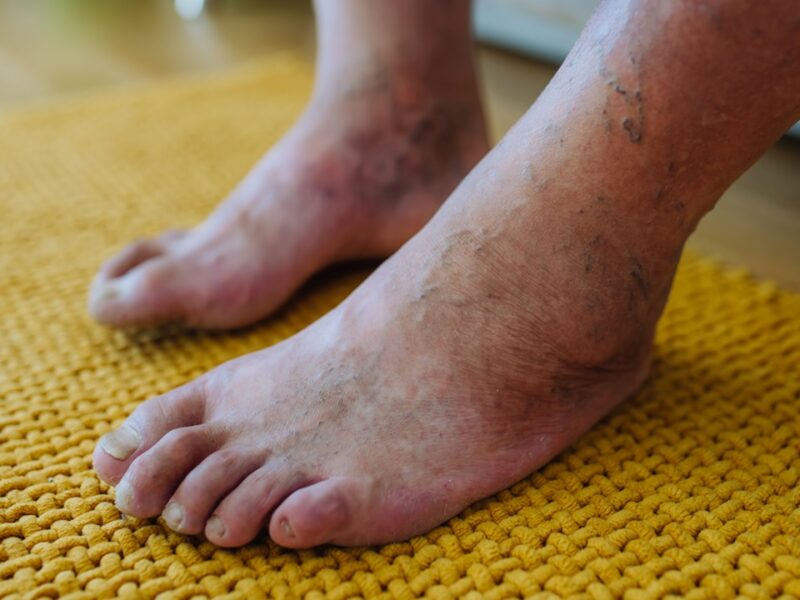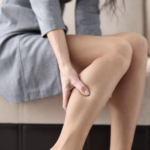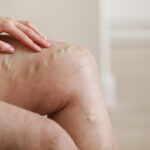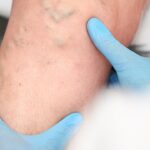Introduction: Aging and Vein Health
As we age, our veins undergo natural changes that can compromise their ability to perform properly. Over time, they become less elastic, making blood flow inefficiently. This often results in varicose veins being prevalent among older adults. Furthermore, as time goes on, the walls of veins may thicken with age, increasing the risk of pooling blood and clot formation. According to a study on age-related vein changes, these structural shifts make older adults more vulnerable to issues like thrombosis.
This article will examine how aging impacts vein health and provide strategies to either avoid or manage related vein problems. This includes staying active, eating a diet rich in vein-friendly nutrients, and knowing when to seek professional advice. For individuals experiencing persistent vein problems, consulting specialists for comprehensive vein treatments could offer effective long-term solutions and improve circulation.
How Aging Affects Veins
a) Natural Changes in Veins with Age
As people age, their veins undergo significant structural changes that impede proper blood flow. Vein walls may thicken over time and lose flexibility, decreasing their ability to expand and contract as needed and consequently slowing blood movement back towards the heart. Furthermore, valves in veins that prevent backflow of blood may weaken over time, leading to pooling in legs, increasing pressure within them. According to the Cleveland Clinic, these age-related changes are a major factor behind the development of varicose veins, a common condition in older adults.
b) Risk of Blood Pooling and Thrombosis
Reduced circulation in aging veins can lead to more serious consequences, including blood pooling and the formation of blood clots. When blood moves slowly, it increases the likelihood that clots form, leading to deep vein thrombosis (DVT). DVT is more prevalent among older adults as their circulatory changes worsen their chances of DVT developing. A study on thrombosis risk highlights how age-related changes in vein structure and function make older individuals more vulnerable to clots and related complications.
Understanding these natural changes is key to taking proactive steps to manage vein health and prevent further complications.
Common Vein Problems in Older Adults
a) Varicose and Spider Veins
Varicose veins, commonly found in the legs, develop when vein valves weaken, allowing blood to pool in them and increase pressure, causing bulging beneath the skin. Spider veins are milder forms of this condition, appearing as thin lines or clusters on the surface of the skin; both conditions typically lead to symptoms including swelling, achiness, and feelings of weight in the legs. According to the University of Rochester Health Matters, these issues are especially prevalent in older adults due to age-related changes in vein structure and function.
b) Chronic Venous Insufficiency (CVI)
Chronic Venous Insufficiency (CVI) is an advanced vein condition. This occurs when leg veins fail to efficiently carry blood back to the heart, leading to symptoms like persistent swelling, skin discoloration, and ulcers in severe cases. CVI often arises as a result of untreated varicose veins or vein problems left unaddressed for extended periods; early intervention with vein problems may help them avoid progressing to more serious disorders such as CVI.
Recognizing these common vein problems is essential for taking timely action to maintain vein health.
Preventing and Managing Vein Issues with Age
a) Staying Active
Regular physical activity is one of the best ways to support vein health as you age. Exercise such as walking, stretching, or yoga can improve blood flow and decrease the risk of blood pooling in legs. Even light movements like ankle rolls or calf raises can make an impactful statement about how active we are throughout the day—helping strengthen muscles that assist veins in pumping back blood to the heart.
b) Maintaining a Balanced Diet
An anti-inflammatory diet with plenty of antioxidant-rich foods such as berries and leafy greens, including omega-3 fatty acids from fish or walnuts, helps to reduce inflammation, while fiber-rich whole grain foods such as whole grain bread can prevent constipation-induced strain on veins.
Tracking and measuring progress in lifestyle changes can help maintain consistency. Tools like the Percentage Calculators Hub make it easy to calculate percentage changes, such as increasing the proportion of healthy meals or time spent being active. Using this approach keeps you motivated and focused on gradual improvement.
c) Compression Therapy
Compression stockings provide an easy yet effective solution to managing vein issues. By applying gentle pressure to legs, they improve blood flow and prevent it from pooling in veins—helping reduce swelling, relieve discomfort, and slow the progression of varicose veins or other conditions such as spider veins. They’re especially helpful if spending long periods sitting or standing.
By staying active, eating a balanced diet, and using tools to measure progress, you can take important steps to protect your veins and manage age-related vein problems.
Seeking Professional Help
a) When Lifestyle Changes Aren’t Enough
Staying active, eating a balanced diet, and using tools like compression stockings may all contribute to better vein health; however, these measures may not be enough for all individuals. Certain conditions, including severe varicose veins or chronic venous insufficiency, may not respond fully to lifestyle changes alone; this may be caused by genetics, damage to veins over time, or other medical issues that necessitate professional intervention.
b) Consulting Specialists
When vein issues persist, seeking medical assistance from professionals such as Vein911 is essential. Our experts specialize in minimally invasive solutions such as sclerotherapy or laser vein therapy to effectively address vein issues—this means improved circulation, reduced symptoms, and prevention of complications. Consulting a vein specialist ensures that you receive personalized care tailored to your specific condition.
Integrating professional care with daily habits such as regular physical activity and healthy eating habits for optimal long-term results. If lifestyle modifications alone don’t seem sufficient, don’t hesitate to seek expert guidance to improve vein health and overall quality of life.
Conclusion: Taking Care of Your Veins as You Age
Aging can have an adverse impact on vein health, including reduced elasticity and an increase in varicose vein risk. By taking proactive steps such as staying active, eating balanced meals, and tracking progress with simple tools, proactive steps can be taken to prevent or manage these problems over time and maintain healthier veins over time.
Consultations with specialists ensure you receive tailored care to address persistent vein health issues, which will increase quality of life as you age. Employing both professional and everyday solutions together to maintain vein health will improve quality of life over time.
Want to unlock greater wellness?
Listen to our friends over at the Wellness + Wisdom Podcast to unlock your best self with Drew Canole of Organifi:








 Respiratory and Sleep Apnea Risks in Recliner Sleeping
Respiratory and Sleep Apnea Risks in Recliner Sleeping